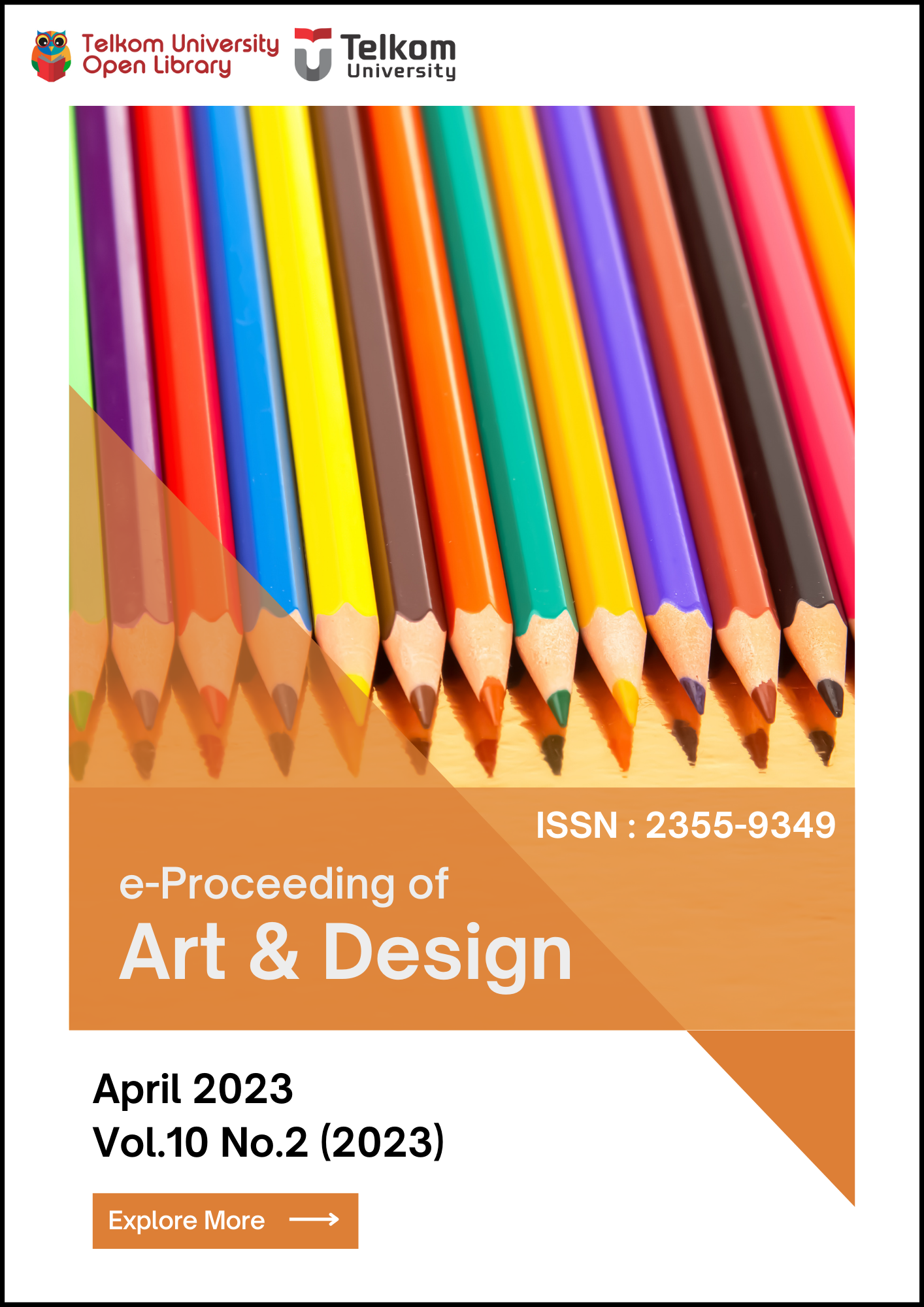PERANCANGAN ENVIRONMENT ART UNTUK ANIMASI 2D TENTATNG PENGARUH TOXIC SUCCESS PADA ILUSTRATOR
Abstract
Perancangan ini bertujuan untuk menggambarkan perasaan seorang ilustrator ketika
mengalami toxic success, melalui lima indikasi utama pengaruh Toxic Succes Syndrom yang
dikemukakan oleh Paul Pearsall di dalam bukunya yang berjudul "Toxic Success: How to Stop Striving and Start Thriving", dikolaborasikan dengan fungsi dan beberapa struktur otak pada manusia yang berhubungan dengan topik terkait ,hal ini yang nantinya akan digunakan sebagai acuan dalam membuat karya berupa Environment Art dengan media digital teknik hand painted dan campuran. Dengan metode pengumpulan data melalui observasi partisipan maupun non partisipan dan studi pustaka. Berdasarkan hasil analisis data, seorang ilustrator yang mengalami toxic success terjadi karena seseorang mengejar sesuatu yang tidak sesuai dengan kebu.tuhan dirinya, sehingga munculah perasaan hampa, kekurangan sesuatu, kekecewaan, bingung, renggangnya hubungan orang terdekat, hingga depresi.
Kata kunci: animasi 2D, environment, ilustrator, toxic success.
References
D Total Team. (2009). Digital painting techniques : practical techniques of digital art masters. 3D Total and Focal Press Agung, Lingga. 2017. Pengantar Sejarah dan Konsep Estetika. Kanisius. Yogyakarta..
Byrne, M. (1999). Animation - The Art of Layout and Storyboarding. Mark T. Byrne Production, Leixlip, Co Kildare.
Clair, K. S. (2017). The Secret Lives of Color. Penguin Books UK.
Dingman, M. (n.d.). KNOW YOUR BRAIN: PREFRONTAL CORTEX. Retrieved from NEUROSCIENTIFICALLY CHALLENGED :NEUROSCIENCE MADE SIMPLER: https://neuroscientificallychallenged.com/posts/know-your-brain-prefrontalcortex, diakses: 23 Agustus 2022
Edwards, B. (2004). Color A Course in Mastering the Art of Mixing Colors. New York: Penguin Group (USA) Inc.
Fowler, M. S. (2002). Animation Background Layout From Student to Professi ona. canada: Fowler Cartooning Ink.
Hernandez, E. A. (2013). Set the action! : creating backgrounds for compelling storytelling in animation, comics, and games. UK: Focal Press. Holt, D. J., ongur, D., Wright, C. I., Dickerson, B. C., & Rauch, S. L. (2008). Neuroanatomical Systems Relevant to Neuropsychiatric Disorders. Massachusetts General Hospital Comprehensive Clinical Psychiatry, 975-995. John Edward, H., & Guyton, A. C. (2016). Textbook of Medical Physiology. ELSEVIER INC. USA.
Murray, M. T., & Nowicki, J. (2020). Ginkgo biloba (Ginkgo Tree). Textbook of Natural Medicine, 620-628.
Norling, E. R. (1999). Perspective Made Easy. New York: Dover Publications Inc. Olesen, J. (2013). Color Meaning. Retrieved from 12 Color Meanings - The Power and Symbolism of Colors: https://www.color-meanings.com/, diakses: 22, Agustus
Pearsall, P. (2002). Toxic success : how to stop striving and start thriving : getting what you want without losing what you need. Maui: Inner Ocean Publishing.
Pudjono, M. (1995). DASAR-DASAR FISIOLOGI EMOSI. In Bultin Psikologi (pp. 41-47).
Rusli, E. (2016). IMAJINASI KE IMAJINASI VISUAL FOTOGRAFI. Yogyakarta: ISI Yogyakarta.
Stone, D. (2020, Oktober 8). Why creative people are more prone to depression. Diambil kembali dari ArtsHub Australia:
diakses: 20 Agustus 2022
Strasburger, H., Rentschler, I., & Jüttner, M. (2011). Peripheral vision and pattern recognition: A review. Journal of Vision.
Sugiyono. (2013). Metode Penelitian Kuantitatif, Kualitatif, dan RD. Bandung: Alfabeta.
Tinarbuko, S. (2003). SEMIOTIKA ANALISIS TANDA PADA KARYA DESAIN KOMUNIKASI VISUAL. Nirmana.
White, T. (2016). ANIMATION FROM PENCILS TO PIXeLS. Oxford: Elsevier.






